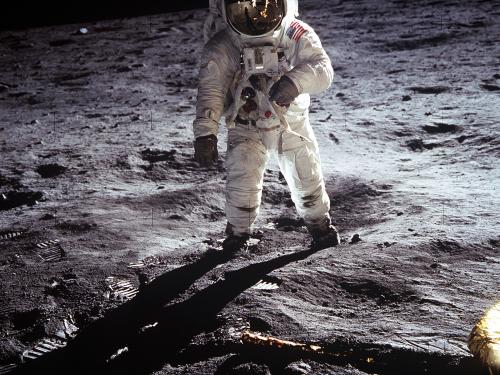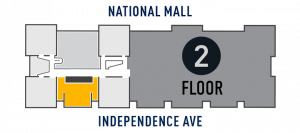
National Air and Space Museum in Washington, DC
Past Exhibition

National Air and Space Museum in Washington, DC
Past Exhibition
The Lunar Roving Vehicle (LRV) was a battery powered "dune buggy" taken to the moon on Apollo missions 15, 16, and 17. The LRV was stowed on the descent stage of the Lunar Module and deployed upon arrival at the lunar surface. The LRV was operated with a spacecraft "stick," rather than a steering wheel.
In addition to the flight vehicles, Boeing manufactured eight non-flight units for development and testing. One, the "Qualification Test Unit," was a very close replica of the units that flew. Using special test chambers, engineers purposely subjected the qualification unit to conditions many times as severe as those expected on an actual mission. When the tests were finished, given the stresses it had been subject to, the qualification unit could not safely be used in space. In 1975, NASA transferred it to the Museum.
This object is on display in Destination Moon at the National Air and Space Museum in Washington, DC.

First Human-Driven Vehicle on Another Planet
The Lunar Roving Vehicle (LRV) was a battery-powered "dune buggy" taken to the moon on Apollo missions 15, 16, and 17. Stowed on the descent stage of the Lunar Module, the LRV extended the range of astronaut EVA activities by several kilometers beyond the landing site.
United States of America
SPACECRAFT-Crewed-Test Vehicles
Boeing Company
Overall: 4 × 5 × 8 ft., 537lb. (121.9 × 152.4 × 243.8cm, 243.6kg)
Aluminum chassis, zinc-coated piano wire wheels, fiberglass fenders, canvas, nylon, brass
Lunar Roving Vehicle
A19760746000
Transferred from the National Aeronautics and Space Administration
National Air and Space Museum
Open Access (CCO)
For more information, visit the Smithsonian’s Terms of Use.